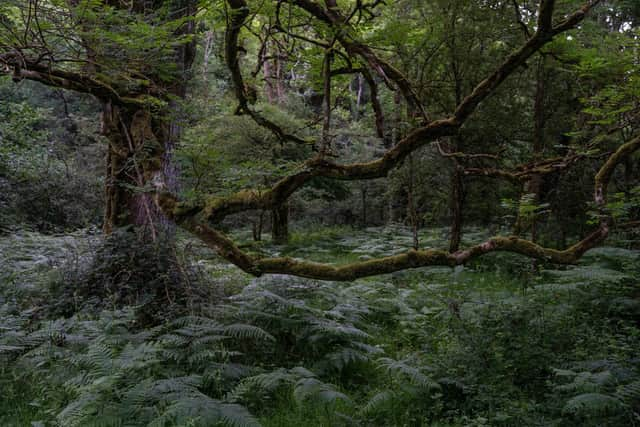Book review: North Woods, by Daniel Mason
Given that Daniel Mason’s utterly beguiling North Woods takes place across four centuries, has a teeming cast of characters, draws on many different styles from barely literate annotations to crime pulp fiction, and features sections that are visceral and supernatural, satirical and elegiac, as well as poems, photographs, paintings, music scores, pages of almanacs and a lot more, it would be tempting to call it a work of the carnivalesque. It would also be a category error. Though the different plots eddy and echo, whorl and whirlpool over the years it is meticulous in its plotting. This is not rambunctious free-for-all, but a cunningly contrived and beautifully intricate book. It is certainly not often that a lost button turning up decades later can make the reader go “Oh!” What tethers and anchors the different stories together is one place, a yellow painted house in the backwaters of Massachusetts. That might sound like the premise for a horror story, and in subtle ways it is.
Over 12 chapters and various interludes, the novel scrolls across the centuries and the seasons in the woods. Much of the writing about nature is done exquisitely, but as important is a form of pathetic fallacy. We see the same scenes through different eyes and they had very different ways of understanding their relationship to the woods.
Advertisement
Hide AdIt begins with a young couple on the run from the repressive Puritan colony. They seem akin to animistic spirits, and the woman in particular will be a brooding presence even after death. After an attack by Native Americans, one hostage is deposited with the woman, and stays on thereafter. The novel then cycles into a more comedic section about a veteran of the wars who has developed “pomomania”. He has had a vision that he to plant an orchard, and after sampling apples all over the territory finds the most delicious variety, which comes to be known as Osgood’s Wonder. We shift to his twin daughters, who are less identical than appearance might suggest; then a slave hunter; a homosexual painter; a fraudulent medium employed by a boor who has turned the cottage into a shooting lodge; his daughter and her schizophrenic son who is obsessed with walks he calls “stitchings” that will ward of the apocalypse; a true crime writer; the academic sister of the schizophrenic who finds his collection of Super 8 films; a bumptious and grieving metal-detectorist; and a botanist working on spring ephemerals who has an unfortunate encounter with a bear on the road. This is kaleidoscopic, multi-voiced material: but is it just spinning plates for the pizzazz of it?


I think not. For one thing there are a range of totems – I hesitate to call them symbols as their exact meaning is shifting. Certain objects, plants and animals, such as an axe, an annotated Bible, the apples, a catamount or panther, squirrels, passenger pigeons and more are all tessellated across the novel. The cottage itself is not fixed, as it expands, is adapted, is damaged, is restored. Like the Ship of Theseus, replaced plank by plank until it is no longer its original, the building persists, and it is more than hinted at that the various characters are like dryads or genii loci, somehow binding its identity into cohesion. It is also important that although the novel is a bravura performance in terms of stylistic variation, almost all the pieces end up in a minor key. Its exuberance is cleverly tempered.
It is also serious. On one hand, events like the French and Indian Wars, the War of Independence and the Civil War all impinge on the Eden in the forest. If the house is a great survivor, the forest is not. It seems like genocide and ecocide go hand in hand. It is not just agricultural enclosure or encroaching urbanisation, though these are part of the tapestry. Mason is particularly good on the various diseases which tear through forests, from ash die-back to Dutch elm disease, a fungus spread by beetles – all take their own bite out of the pristine. (The beetle chapter is remarkably funny, as the beetle is absolutely sex-mad).
This will no doubt appeal to readers of David Mitchell in terms of its narrative pyrotechnics, and to readers of Richard Powers, especially his Booker shortlisted The Understory. But Mason’s work has its own distinct charms. A gothic sensibility seems to link all the stories, as well as an elegiac tone, which makes the final chapter all the more astonishing. I cannot think of many other examples of the transcendental in fiction that are not mawkish or unconvincing.
Somehow, lines from hymns kept chuntering around my mind as I read this: “Frail as summer’s flower we flourish / Blows the wind and it is gone”, “Pride of man and earthly glory / Sword and crown betray his trust” and suchlike. North Woods is not per se a religious book, but it has that Nan Shepherd sense that looking deeply and observantly pierces the natural. I very much hope that prize judges take this book seriously this year.
North Woods, by Daniel Mason, John Murray, £16.99